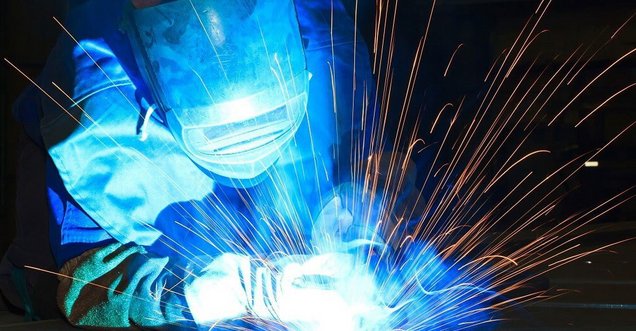Click HERE to visit our new PhotonWeld Website
All latest info on ourPhotonweld Series of laser welding machines here to find

Ventilation Solutions needed for Laser Welding
Altough MUCH LESS fume, you still need fume extraction!
Laser welding is a rapidly growing process in manufacturing and is popular due to its high level of precision and efficiency. While the initial investment for laser welding systems is higher than most other systems, the benefits are profound in terms of ability and speed.
However, laser welding operations incur serious challenges when it comes to weld fumes. Because laser welders operate at such high temperatures, their weld fumes, altough much less than in normal welding, are full of very small particulates. The smaller the particulate, the more inhalable and dangerous it is for workers.
While a laser welder functions in an enclosed cell—one without a human operator—it is still very important to capture the fumes inside the cell. Besides toxicity and other reasons to collect weld fumes, such as safety regulations, laser welders need a fume free environment so the laser can perform at its optimal level. If fume builds up near the laser, the particles within the fume can refract the laser beam, making the process both less efficient and less precise.
Exposure Risks for Laser Welding Dust and Fume
In some ways, laser welding is a much safer metalworking process than many others. Sure, there is a high-powered laser involved, but the process is fast and hands-off. However, the dust and fume created by laser welding can be a serious inhalation hazard. The intense heat involved in the process creates particulates in the sub-micron size; the smaller the particulate, the easier it is inhaled and absorbed into the body.
Because metal welding produces metallic dust, the process is especially dangerous. Dusts might include metals such as chromium, lead, nickel, cadmium and others. These dusts are so dangerous the Occupational Safety and Health Administration (OSHA) has issued separate worker exposure limits for each one. Some of these metals have been implicated in cases of cancer and other serious diseases.
Fine metallic dusts can be an ignition hazard, as well. If certain metallic dusts accumulate in an enclosed space and interact with water, they can produce hydrogen and lead to an explosion. Dust explosions injure or kill many workers, every year.
Laser welding fume causes other problems, as well. While not a health issue, the impact of fume on cutting efficiency is a serious concern. Fume from laser welding can be so thick but invisible for our eyes, that it can diffuse the beam. This reduces the intensity of the beam and can interfere with the process. Also, maintenance costs for these processes can rise if dust is not extracted properly.

Given the possible automation of laser welding units, the systems can achieve much higher productivity than a strictly manual workforce while consuming less resources. The downside of this increased efficiency is additional weld fume and the need for capture equipment to effectively remove the smoke from the area. Lasers, after all, require a very clean operating environment since smoke causes laser refraction and refraction is the enemy of good welds.
Laser welding fume extraction requires a slightly different approach than typical manual welding ventilation systems. As stated above, the lasers require an extremely clean air environment to protect against laser refraction which can result in an indirect focus of the light beam on the weld seam, diminishing quality. The laser welding ventilation system should provide a 10 to 15 second turnover rate for air at the point of welding to ensure a clean enough environment.
In addition to a clean air environment, laser welders require light-tight enclosures to prevent lasers from escaping the weld area and causing harmful effects to the plant and workers. Since the enclosure is essentially sealed, source capture welding ventilation systems should be integrated to each laser welding enclosure to prevent weld fume accumulation.
Finally, it's important to remember the characteristics of weld fume particulate created in laser operations. Compared to other types of welding, the resulting particles are much finer. Therefore, the laser welding ventilation system should incorporate filters designed specifically for capturing these ultra-fine particles and removing them from the air before it's returned to the plant environment.


